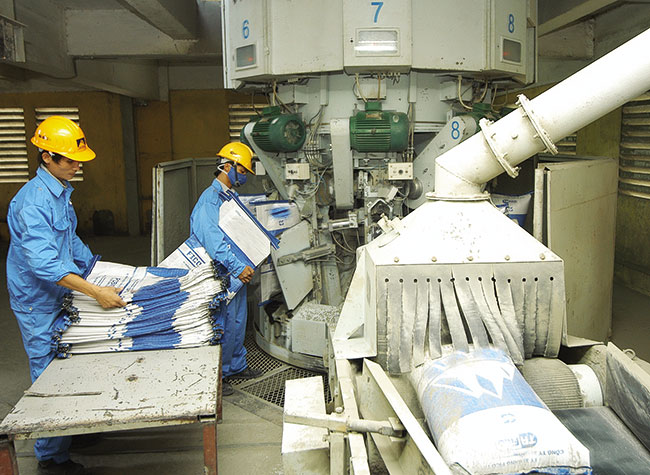Cement companies blocked

Many cement makers failed to meet government deadlines for applying energy-saving systems to their plants-Photo: Le Toan
Under the national cement industry development plan for 2020 with a vision to 2030, all cement plants with a capacity of 2,500 tonnes of clinker per day or more were required to apply waste heat gas generation (WHGG) systems by 2015 to help the plants save at least 20 per cent of their electricity consumption.
According to Nguyen Hoang Cau, secretary general of the Vietnam Cement Association, there are more than 40 cement-making production lines across the country subject to the requirement.
Among these, foreign cement makers such as Taiwanese-backed Phuc Son Cement, Hong Kong’s Luks Cement Vietnam Limited, and Japanese-funded Nghi Son Cement have failed to abide by the rule.
The main reason for the delay is the high cost of applying the WHGG technology, particularly important given the context of low cement sales due in part to recent real estate market woes.
Deputy director of Nghi Son Cement Doan Nam Khanh previously shared VIR that the cement sector was facing hard times, adding that “It is necessary to invest in WHGG, but without financial help, it would be next to impossible for the firms to do it.”
Previously, a representative of Phuc Son Cement, which holds a 14 per cent share of the market, said that the company was looking into the new technology, but refused to comment further.
Cau has already requested incentives from the Ministry of Finance to carry out the cost-saving measure, but investment for the WHGG system is reportedly not included in banks’ incentive lending policies.
In a report for the cement sector, Nguyen Quang Thuan, chief executive officer of Stockplus, explained that commercial banks are not eager to lend more, except for the Asian Development Bank’s financing of state-run Vietnam Cement Industry Corporation, which is still being worked out.
Cement production is one of Vietnam’s most energy-intensive industries. According to the Vietnam Building Materials Association, the country is currently home to 51 cement plants with 73 production lines and a total capacity of 73.45 million tonnes per annum.
What the stars mean:
★ Poor ★ ★ Promising ★★★ Good ★★★★ Very good ★★★★★ Exceptional
Latest News
More News
- Mitsubishi Estate launches Logicross Hai Phong - a milestone in logistics evolution (November 20, 2024 | 14:32)
- Semiconductor workforce partnerships deliver industry-relevant training (November 20, 2024 | 10:58)
- German Quickpack to invest $31.7 million in Long An province (November 20, 2024 | 09:31)
- Foreign-invested enterprises drive logistics investment in the southeast region (November 20, 2024 | 09:27)
- Chile visit underscores trade benefits (November 19, 2024 | 10:00)
- Trump’s second term impacts sci-tech activities and industry 4.0 technologies (November 18, 2024 | 10:00)
- Vietnam eyes nuclear revival to bolster energy security (November 14, 2024 | 16:46)
- Kyokuyo completes $13.5 million seafood factory in Vietnam (November 14, 2024 | 12:19)
- VinFast receives $3.5 billion funding from Vingroup and Pham Nhat Vuong (November 14, 2024 | 06:38)
- Localities sprint to reach FDI targets (November 13, 2024 | 10:00)


















 Mobile Version
Mobile Version